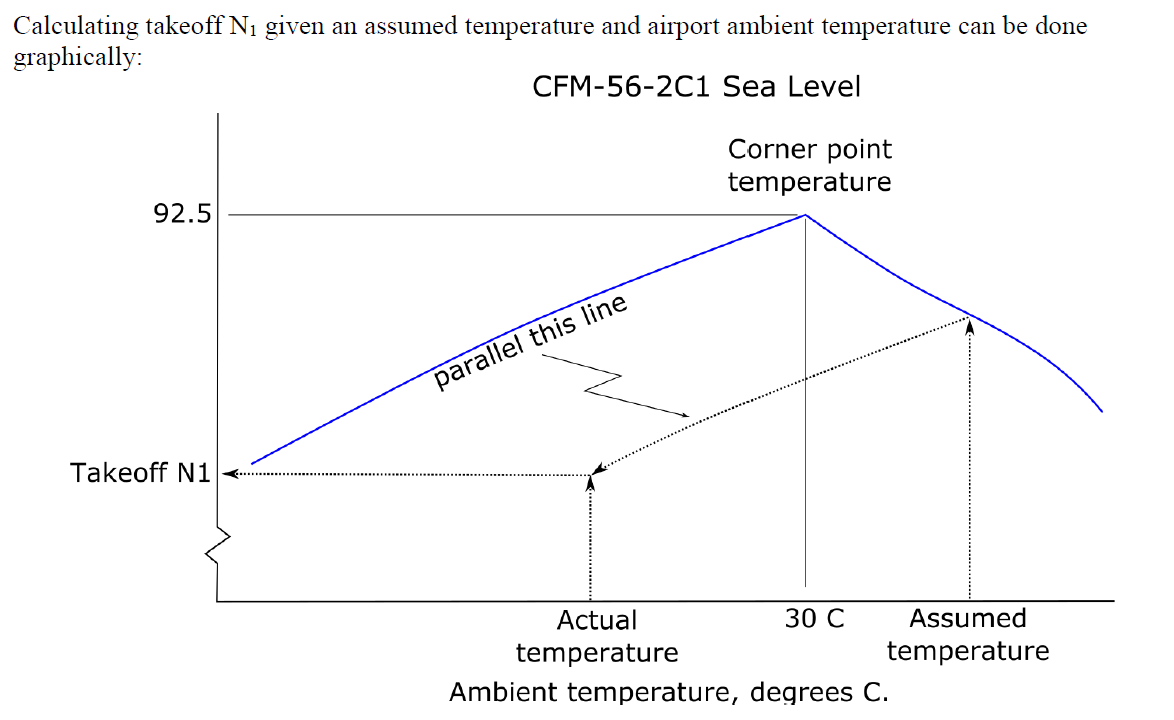Originally Posted by
Le Flaneur
On flat-rated engines where N1 sets power (GE, CFM), the OAT affects the N1 when using the assumed temperature method. This is because N1 is not constant below the corner point temperature. See attached graphic. On engines where EPR sets power, the OAT below the corner point temperature does not affect EPR when using the assumed temperature method.

With a higher OAT, your N1 will increase, but you still have exactly the same available thrust, anywhere in the range from calculated OAT to assumed temperature.
We don’t calculate or set an N1 value. We calculate a flex temp and enter that in the FMGS/FMS. The FADEC (Airbus) will set your N1 and your thrust is whatever you expect it to be at the assumed temperature.
Vilas explained it perfectly: TO performance doesn’t change with OAT on paper TO performance charts when using a flex temp, so why would it change with an electronic calculation?
Yes, you might get different speeds and stop margins, because who knows what’s going on behind all the calculations and the software is designed to optimise all of this, but your initial calculation is valid for any OAT up to the assumed temperature.
(At my previous company, selecting TOGA gave us lower speeds than flex. However, if you use your speeds from the flex calculation and use TOGA, your performance is still valid. This was an interesting situation in case of reported wind shear. Some Captains(!) absolutely wanted to have TOGA in the calculation, unknowingly reducing the safety margin in case of wind shear, due to the lower speeds.)